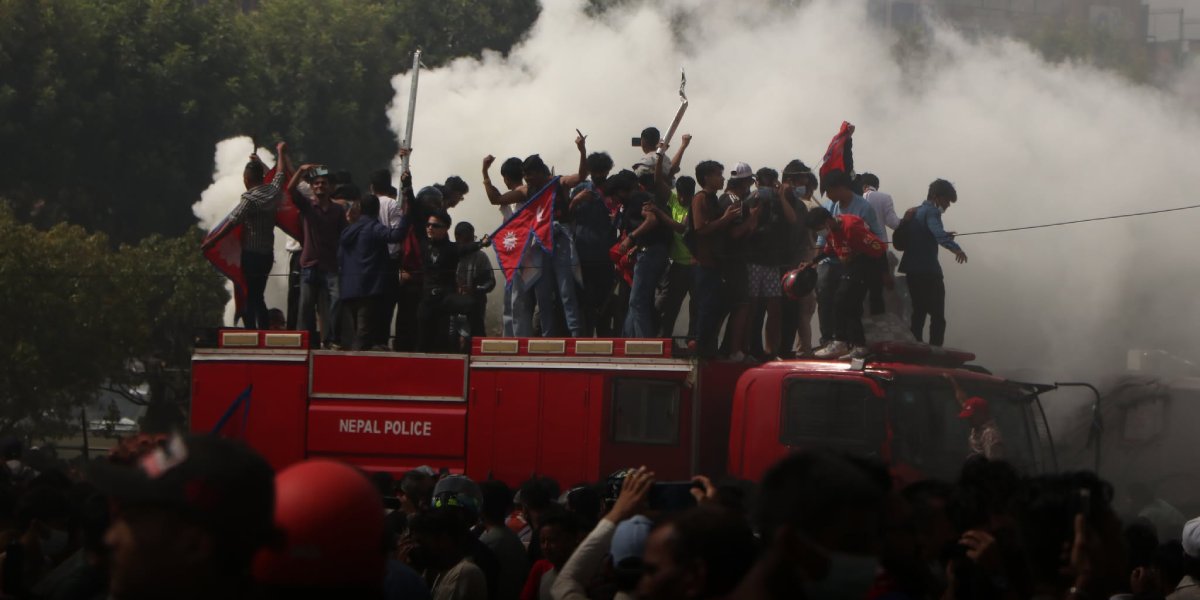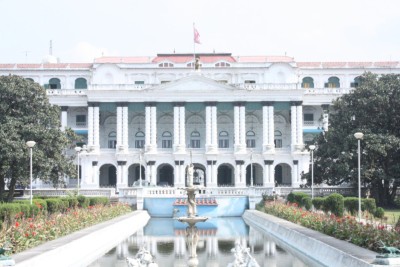Nepal Witnesses Historic “Gen Z” Protests: From Social Media Ban to Prime Minister’s Resignation

Kathmandu, September 11, 2025 Nepal is in the midst of a political and social unrest unlike anything seen in recent years. What began as a ban on popular social media platforms has spiraled into nationwide protests, violent clashes, and ultimately the resignation of Prime Minister K. P. Sharma Oli. The unfolding events, often described as the “Gen Z Movement,” highlight the growing frustration of young Nepalis with censorship, corruption, and government accountability.
The Social Media Ban that Sparked Unrest
The crisis began when the Nepali government abruptly announced a ban on several social media platforms, claiming these platforms had failed to comply with mandatory registration and oversight rules. Officials justified the move by citing concerns about “misuse” and “lack of regulation,” but for millions of young people it was seen as an attack on freedom of speech and digital rights.
For a country where platforms like Facebook, TikTok and Instagram are central to communication, business and activism, the ban struck a nerve. Within hours, students and young professionals organized protests online and offline, quickly gaining traction under the banner of “Gen Z protests.”
September 8: The Protests Turn Deadly
What began as peaceful demonstrations in Kathmandu escalated dramatically on September 8, 2025. Tens of thousands of protesters took to the streets demanding not just the reversal of the social media ban but also an end to corruption and mismanagement within the government.
Clashes soon broke out between demonstrators and security forces. Reports confirm that at least 19 people were killed and more than 100 injured in the violence. Security forces used tear gas and rubber bullets, while some protest groups resorted to stone-pelting and setting barricades on fire.
The scale of unrest shocked the nation. Protesters attacked government buildings including parts of Parliament House, and set fire to the offices of political parties. Even residences of senior leaders were not spared, symbolizing public anger toward the political elite.
Destruction and Escalation Across Cities
The violence was not confined to Kathmandu. Major cities including Pokhara, Biratnagar and Nepalgunj reported arson, vandalism and looting. Government vehicles were torched, and local administrative offices came under attack.
Security forces were deployed nationwide, but images of burned-out offices, damaged public property and injured citizens flooded social media (despite the ban), amplifying outrage further. For many, this unrest was not just about the ban but about years of growing dissatisfaction with ineffective governance.
Government Concedes: Ban Lifted
Facing mounting national and international pressure, the government announced on September 9 that the social media ban had been lifted. Officials admitted the measure was unsustainable given the scale of public anger.
However, this concession failed to calm the protesters. Many young activists declared that the issue was no longer about internet freedom alone, it had evolved into a fight for transparency, accountability and structural reform.
The Prime Minister’s Resignation
In a dramatic political turn, Prime Minister K. P. Sharma Oli resigned on September 9. In his address he stated that he was stepping down in the interest of peace and stability. Oli’s departure has created a leadership vacuum and raised questions about who will take charge in this volatile climate.
While some welcomed his resignation as a victory for the people, others warned that it could lead to further instability if the political transition is mishandled.
What This Means for Nepal’s Future
The “Gen Z protests” mark a watershed moment in Nepal’s modern political history. Analysts suggest that the movement is not just about one incident but about the rise of a new generation demanding change. With nearly half of Nepal’s population under the age of 30, this demographic shift is likely to influence the nation’s politics for years to come.
For now, the streets remain tense, with heavy security deployments in Kathmandu and other major cities. Protest leaders say demonstrations will continue until broader reforms are initiated, including stronger anti-corruption measures and protection of democratic freedoms.
The coming weeks will determine whether Nepal can channel this unrest into constructive political change or slide deeper into prolonged instability.




-1745569762.jpg)
-1745569762.jpg)
-1745569769.jpg)
-1745569771.jpg)